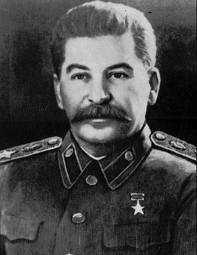As World War II drew to a close the political geographic makeup of Europe began to shift drastically. After Germany had invaded Russia in 1941 as part of Operation Barbarossa, the tide of the war began to shift. After the German invasion was halted, the USSR began to push the enemy back, and in 1945 the USSR eventually overran Berlin.
After successfully defeating the Germans, Berlin was split into four quadrants, belonging to France, Great Britain, the Americans, and the Soviets. However, as time wore on the city eventually split into two with the Americans on one side and the Soviets on the other. Eventually, the Soviets overran several states setting up communist governments, as well as buffer states. This buffer area began to be known as the “iron curtain”.
The iron curtain was a physical and symbolic entity. As a physical entity, the iron curtain was essentially a bunch of countries that served as a border between the countries of Eastern and Western Europe. These areas become some of the most heavily militarized parts of the world during this time period.
After Germany was partitioned in 1949, the Soviets set up a physical barrier slightly inside of East Germany. This barrier was set up predominantly for two reasons, which were to keep people from escaping and to protect against western intrusion. A physical electric fence barrier also ran through former Czechoslovakia, about 100 meters inland and spanning a wide distance (Modern Border Operations).
As a symbolic entity, the iron curtain holds most of its significance. After World War II the Soviets annexed several countries. They took complete control over countries such as Ukraine, Belarus, Lithuania, and Latvia. They also set up communist governments in places like Czechoslovakia, Hungary, Romania, and Poland. As a result of these annexations and puppet governments, the Soviet territory became greatly enlarged. This enlargement gave the Soviets the prestige and status which they had desired since their inception and serves as one of their justifications for this massive annexation.
After the Soviet victory at Stalingrad, it was as if new life had been breathed into the Soviets. With this new confidence and the drive towards Berlin, the Soviets showcased a new ideological, social and economic viewpoint for the rest of Europe (USSR and the Creation of the Buffer Zone). Obviously, the whole of Europe had experienced monarchies and democracy, and now the ideology of communism would be spread as well. After the war finally ended, the Soviets continued to use the buffer zone with a fierce military presence.
The main difference between the US and the USSR is that the Soviets remained mobilized at the end of the war while the Americans were not (USSR and the Creation of the Buffer Zone). So as a result of the iron curtain the Soviets were finally able to establish themselves as one of the two major superpowers of the world.
The territorial advantages of a buffer zone are an obvious reason for the Soviet rationality behind the iron curtain. However, there is one more pressing issue that the Soviets had to address which is the primary justification for the Soviets annexing half of a continent for their own benefit. Simply put, after the destruction of World War II and several other wars over the past century, the Soviets were simply unwilling to fight another war on their home soil.
Operation Barbarossa leads to the deaths of 10.7 million Soviet soldiers, and over 14 million Soviet citizens (World War II: Combatants and Casualties) Approximately 14% of the entire Soviet population was wiped out by World War II (World War II: Combatants and Casualties). The reality is that no country was hit harder by World War II, than the Soviets and the numbers speak for themselves.
After World War II, things were uncertain, and it seemed like war could become a reality again. After all, things deteriorated so rapidly after World War I, that anything was possible. But as technology continued to advance, the reality of another war being fought on Russian soil would lead to casualties and damage beyond comprehension.
Therefore, if a third major war in Europe was going to be fought involving the Soviets, there was no chance it was going to be fought on actual Soviet soil. As a result of this thinking, a massive buffer zone spanning the whole of Eastern Europe was created in the event that should tension ever boil over, it wouldn’t actually be Russia that was taking the hit for the conflict like in wars past.
The Soviet buffer zone served its purpose and has since fallen. During its time it served as both a physical entity, with barriers set up in Germany and Czechoslovakia. The buffer zone also served as a symbolic barrier that signified the territorial gains of the Soviet Union, as well as the new legitimacies of this empire. Finally, the buffer zone allowed for the Soviets to feel comfortable that the next major war would not be fought on their homeland, but rather closer to this buffer.
Works Cited
“Modern Border Operations.” http://www.history.army.mil/documents/BorderOps/
ch6.htm. N.p., n.d. Web. 30 May 2010. <http://www.history.army.mil/
documents/BorderOps/ch6.htm>.cf
“USSR and the Creation of the Buffer Zone.” http://www.ena.lu/. N.p., n.d. Web.
30 May 2010. <http://www.ena.lu/>.
“World War II: Combatants and Casualties (1937 – 45).”
http://web.jjay.cuny.edu/~jobrien/reference/ob62.html. N.p., n.d.
Web. 30 May 2010. <http://web.jjay.cuny.edu/~jobrien/reference/
ob62.html>.

